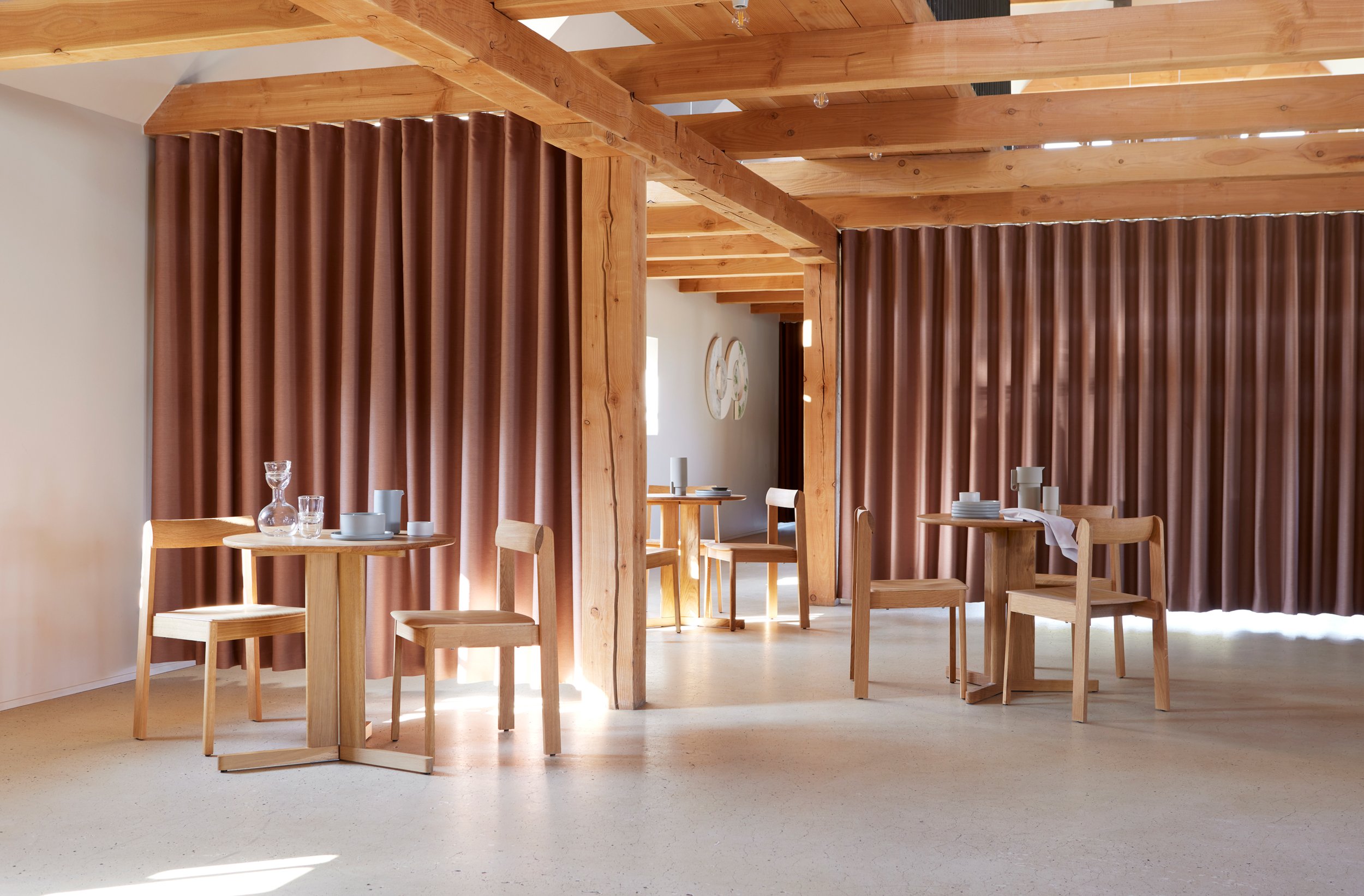
Original Design
“A copyist, by their very nature, exists to make products as cheaply as possible. In essence they are saying ‘let's try and make this worse than the designer intended.”
Tony Ash, Managing Director Vitra UK, Dezeen
Bringing Awareness to Original Design.
-
Original design furniture is just that. It is an original piece of furniture which has been designed and manufactured by the intended licensee and sold through an authorised retailer. It has been manufactured with the designer’s exact intent. It is built in line with the manufacturer’s best practice with regard to sustainability and with ethical resources.
Original design is the work of an inventor/designer who is entitled to hold the intellectual property (IP) rights for the design.
When you purchase an authentic piece of furniture, you are investing in heirloom quality design that has longevity and lasting value.
-
When you buy original and authentic designed furniture you are supporting not only the families & foundations of the designer you are supporting the creative industry and the incentive to design.
Designers and their foundations, receive small royalties from each product sold. Most of the time these profits are used to fund their next creation, keep their design studio’s running, explore with new materials and refine their skills. Sadly the profits are also used to legally fight the battles of the stolen designs.
Without the support of consumers investing in their furniture, we are closing the circle on new design and technologies.
-
Legislation
In many countries original design is recognised and protected. Unfortunately, in Australia our legal protection lags behind. The Designs Act states designs must be registered before they are manufactured for market. Once a design is sold, designers lose their ability to register them under the Act, and they can therefore be legally copied.
Furthermore, Australia only recognises a registered design for a maximum of 10 years (five years at the outset and five more upon renewal). In other western countries, protection lasts for more like 50–75 years, so designers can enjoy benefits from their own work during their lifetime.
In 2016 the UK joined the EU Intellectual property (IP) Law. I remember reading the article online as I sat at my desk at Skandium. Skandium is an official retailer of mid 20th century classics produced by Vitra, Knoll, Carl Hansen and Fritz Hansen, so this news was celebrated that day at Skandium and throughout the UK design industry. I spent the next 3 years of my professional career enjoying the selling of classic furniture without having to explain why replica furniture is a poor practice. I was not at all bothered by fake/replica furniture, as it was slowly evaporating from the market. Unfortunately, upon my return to Australia I didn’t expect the hard reality I would be faced with again.
Australia is accustomed to accepting replica furniture and the consumer can’t be blamed when replica furniture is EVERYWHERE! We see it on lifestyle and renovation TV series, in homes of design influencers on social media and most frightening of all – on the pages of interior design magazines.
What has me so confused is why people are so accepting of fake/replica furniture when it is not tolerated and taboo in other industries such as fashion, film and written content? Why do Australian’s continue to endorse replica furniture? I believe in part this is due to the fact the most Australian consumers are not aware of the fact that when purchasing they are actively destroying the industry and in an even deeper sense, they don’t realise that what they are purchasing is in fact replica and the harm that it contributes to the industry and the environment. We have been conditioned to accept fast furniture as we have fast fashion and from a sustainability standpoint alone, this needs to stop.
Quality
In order to keep the cost of a replica piece of furniture affordable there is a considerable cut in the quality. When a replica of an original design is made, it is usually far from representative of the designer’s diligence and talent. The most apparent example is the product’s lack-of quality.
People are easily drawn into the allure of a low price tag. The feeling that you have scored a bargain can sometimes be elating. However, in the market of fake furniture, we need to reframe our perceptions of value. Only by raising public awareness and educating consumers of how replica pieces can be sold at substantially lower prices will customers have sufficient information at their disposal to properly assess their options and make fully informed choices.
A replica may look like the original however it typically does not meet the same quality of standards and definitely will not be able to retain its value or share a similar lifespan of an original.
Environment & Work Conditions
Many mass-produced replicas are manufactured in factories overseas with unbearable work conditions, unreasonably low wages, and poor environmental practices. If you haven’t watched the Netflix documentary Broken, documenting the counterfeit make-up industry I highly recommend. It not only explores how counterfeits damage the industry but it takes a closer look at some of the conditions factory workers are forced to endure.
When consumers choose to purchase replica furniture, fast fashion and counterfeit goods, they are contributing to these exploitive working conditions.
The environmental & sustainable positive initiatives of these factories, tasked with producing mass-produced replica’s are non- existent as cheap materials are not environmentally friendly.
-
At the forefront of the fight for IP protection is The Authentic Design Alliance (ADA) founded in 2010 and relaunched in 2016. “It is spreading the word that ‘replicas’ are counterfeits of original design and, needless to say, not a trend, as in the case of vintage or industrial items.” Australian Design Review
The ADA is a social enterprise leading the fight against design theft in Australia. They advocate for improved Intellectual Property (IP) for furnishings and create awareness about why we must buy once, choose well and not support the fast furniture industry.
The director of the ADA Anne-Maree Sargeant, along with a host of industry heavyweights, including furniture designer Adam Goodrum, Cult retail owner Richard Murano and Top3 retail owner Terri Winter are championing for change. IP Australia is currently embarking on research into design systems, trademarks patents and design regulations.
To many outside the industry, the word ‘replica’, is not clearly understood.
In talks held by the ADA they found that people think ‘replica’ means ‘vintage’ or think it’s a trend.
‘The word ‘replica’ is damaging in itself. Let’s be clear – an object is either real or fake. Australians need to support original design.’
Anne-Marie Sargeant, Authentic Design AllianceTop3 by design are one of the leading retailers selling affordable original design. Managing director of Top3 by Design Terri Winter says, “Whilst copies are cheaper, I have never seen a copy be an ‘improvement’ on the original.”
The Nord Agency is a proud supporter of the ADA. With aligned values we both strive to promote the original design and support the creators, brands, manufacturers, distributors and retailers in the fight against design theft.
The Nord Agency continues to use its agency as an education platform to inform consumers about the way replica furnishings cause long lasting damage to the design economy and by investing in an original you are buying a product which is designed to last a lifetime.
-
“If you have $200 for a chair, find a $200 chair. Not a $200 copy of a $1200 chair. The culture of of disposable decorating isn’t sustainable. Choose well and buy once.” Anne-Marie Sargeant, Director, Authentic Design Alliance
There are plenty of desireable furniture options to explore in lieu of a design classic. Let’s start at most people’s first thought - Ikea. The Swedish home of flat-pack furniture, but did you know that each piece of furniture has been designed by a credible designer, not a copyist and in some cases, pieces have been designed by world class designers such as London based Interior Designer Ilse Crawford.
In the homes of many famous Scandinavian interior designers, Ikea classics can be found amongst their prized designer classics. The key is to think forward and choose pieces which will work with your desired future purchases. I have some cherished Ikea pieces in my own home. One being a sofa I shipped back from London as the Australian Ikea did not sell that particular collection.
Whilst Ikea has been known for their ‘disposable’ furniture, they have been working hard to change this outdated message. Their furniture is now more than ever is designed with the intention and strength of being long-lasting. They use sustainable materials and work with the best designers to create pieces to fill any home.
Another avenue is to look within your own community and find retailers who are selling locally-made furniture and engaging in sustainable practices. A little search on google can always point you in the direction away from the mass produced replicas.
Finally, there are the second hand stores which specialise in Scandinavian and mid-century furniture. However, don’t be surprised if some of the pieces are near the cost or more than a new original, because when you purchase an original piece of furniture, you are purchasing an heirloom, a design classic which will retain its value for a lifetime.
-
ADA
https://authenticdesignalliance.org/Authorised Retailers of Classic and Mid-Century Furniture in AUS & NZ
Top3
https://top3.com.au/Design Stuff
https://www.designstuff.com.au/Slow Store
https://www.slowstore.co.nz/Design Denmark
https://www.designdenmark.co.nz/Cult Design
https://cultdesign.com.au/Great Dane
https://greatdanefurniture.com/Fred International
https://fredinternational.com.au/Living Edge
https://livingedge.com.au/Space Furniture
https://www.spacefurniture.com.au/Second hand Classic and Mid-Century Retailers in AUS & NZ
Vamp Vintage Design
https://vamptvintagedesign.com/Nord Modern
https://nordmodern.com/


